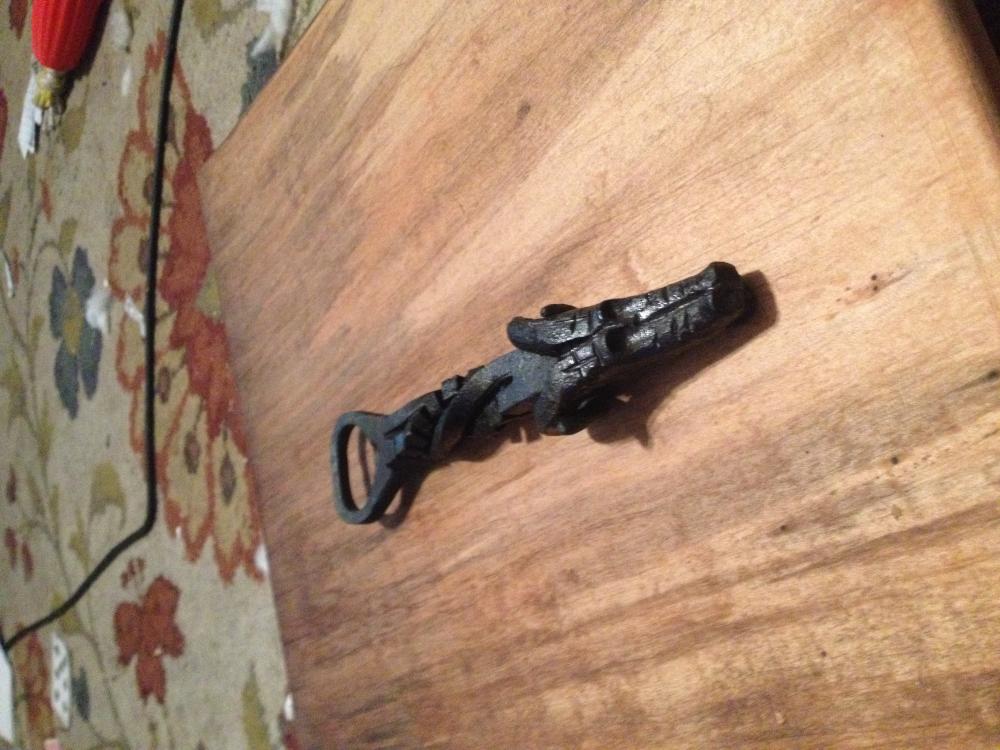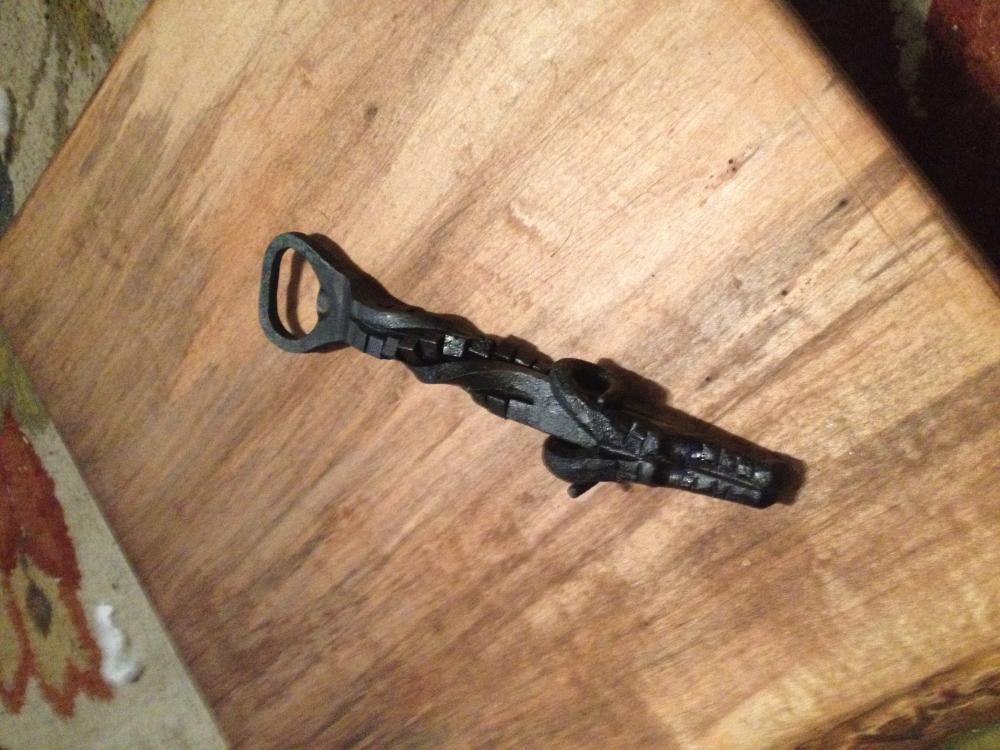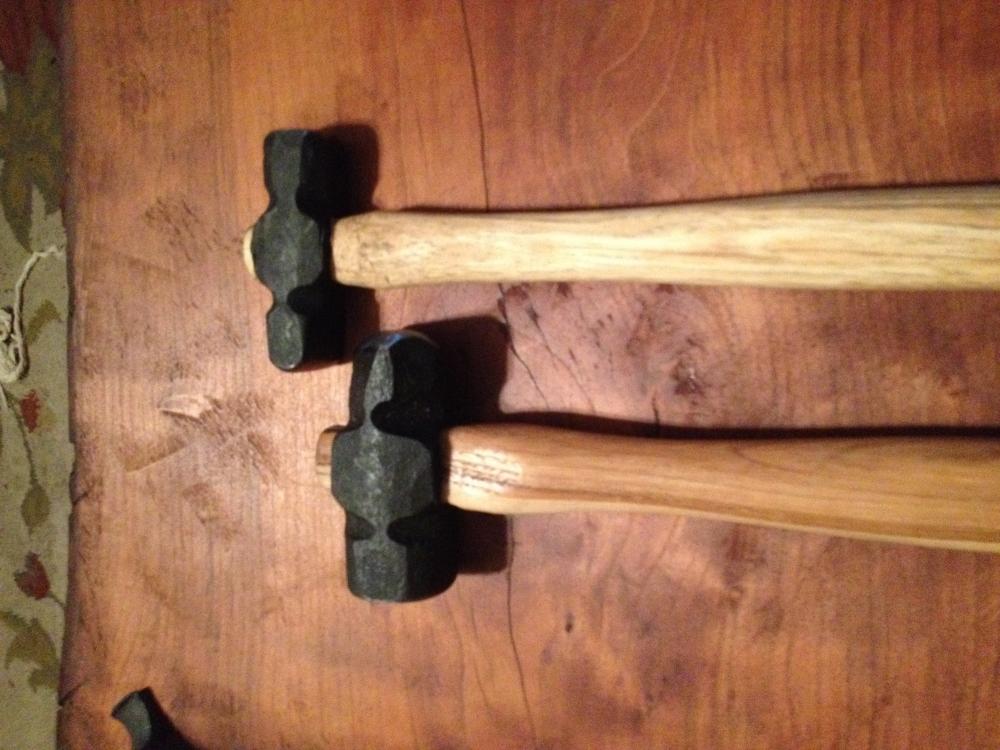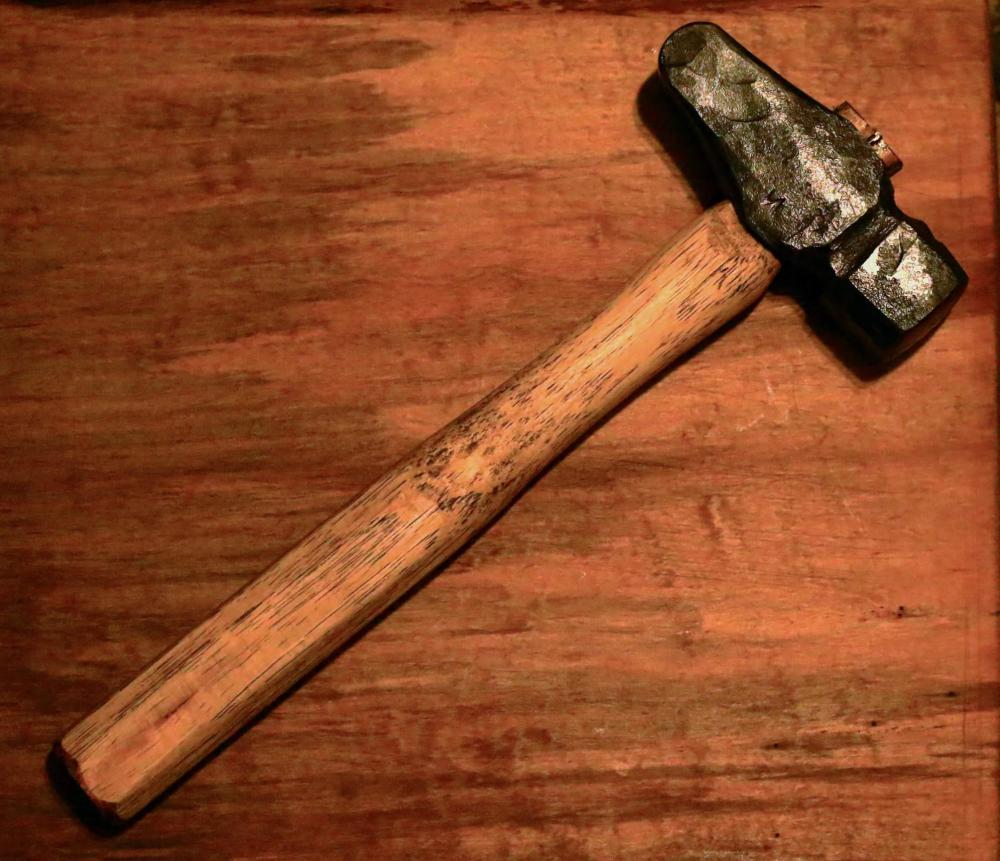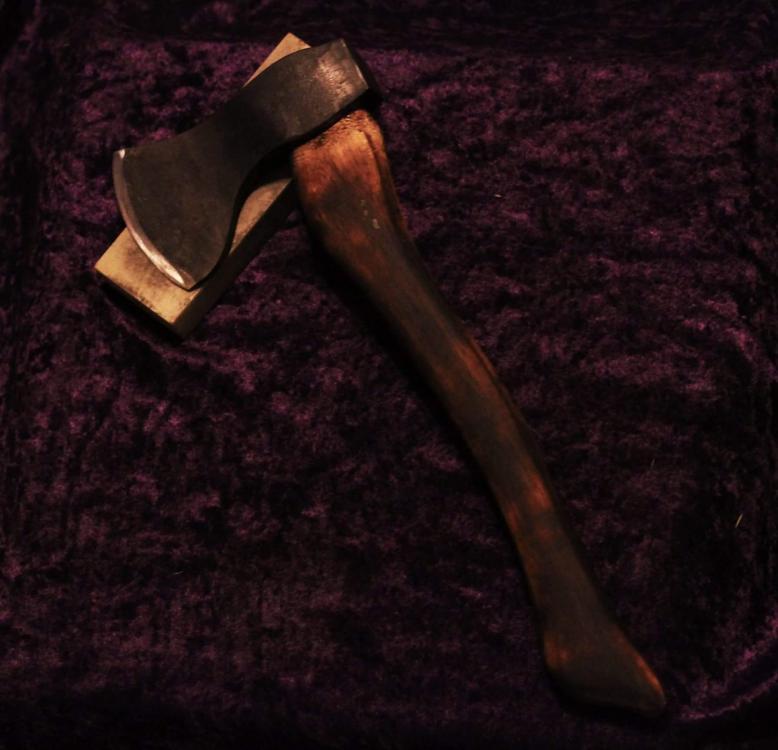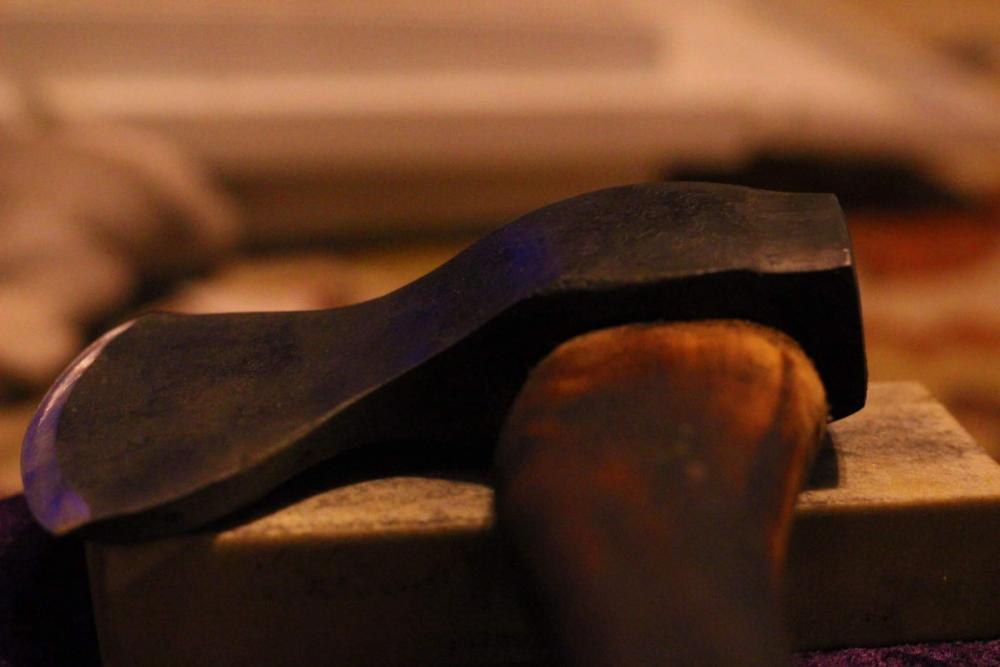-
Posts
526 -
Joined
-
Last visited
Content Type
Profiles
Forums
Articles
Gallery
Downloads
Events
Everything posted by NickOHH
-
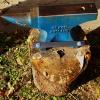
Show me your Bottle Openers!
NickOHH replied to Arbalist's topic in Blacksmithing, General Discussion
Here's one I did this weekend out of 5/8 square. Gonna keep working on the animal heads, and the cube twist looks cool, takes some patience though! Lol -
Most of my bandsaw experience is with vertical bandsaws , but wouldn't blade drift still be an issue to deal Ruth in either position? It's a shorter cut so it wouldn't walk as far, but the blade still has a certain amount of twist to it, every blade is different . Feeding to hard would also cause a more dramatic effect. It would be my thought that as long as there's a band there would be twist, and where there's twist it won't cut straight .
-
With bandsaws you must compensate for drift caused by the blade twisting a little bit as forward pressure is put on it that must be compensated for. take a peice of something metal plastic some kind of sheet , draw a line and push it straight, this shows how much it wanders, if your setting up a rip fence you would want to angle it that much to get a straight cut.
-
Nice job , look way better than my first pair. But I agree make another pair and then a few more and compare em all.
-

Is 1141 steel good for hammers or other tooling?
NickOHH replied to Beatsy' s Forge's topic in Hand Hammers
A good experiment would be to cut 3 equal sized pieces and heat to the same temp/color and try one in brine, water and oil and use a file to compare the hardness. -

Is 1141 steel good for hammers or other tooling?
NickOHH replied to Beatsy' s Forge's topic in Hand Hammers
.3 for oil as in 1/3 of an inch, only for really small stuff. So I would use brine , could probably swing just water though. No problem I miss read so I wanted to make sure I corrected it, just because it is "never recommended" for forging doesn't mean ya can't either I'll be waiting to see how it turns out. -

Is 1141 steel good for hammers or other tooling?
NickOHH replied to Beatsy' s Forge's topic in Hand Hammers
Well for full hardness 48-52 rc depending on exact carbon content you should use brine not oil, oil for sections around .3" or less. You could definetly try it and find out since you have it already, I just don't know if I would trust not running into issues if you made a bunch of em. I would try it. -
My main hammer is the a diagonal peen (left in the first picture) weighs about 2.5-2.75 haven't weighed it. And I've been using a 3# cross peen for my normal work, both forged by me. Been using a 7 or 8# strait peen for larger work but I don't have a pic of that handy.
- 18 replies
-
- hammers
- blacksmith
-
(and 5 more)
Tagged with:
-

Is 1141 steel good for hammers or other tooling?
NickOHH replied to Beatsy' s Forge's topic in Hand Hammers
Did he forge them though or just make hammers i.e. Machining them from what I read it would make a decent hammer but forging it could lead to problems. -
Nice ausfire, I've had a similar idea but haven't peeled myself away from toolmaking lately. Very nice work!
-

Is 1141 steel good for hammers or other tooling?
NickOHH replied to Beatsy' s Forge's topic in Hand Hammers
Actually I may have jumped the gun, from the heat treaters app on my iPhone it says never recommended for for forging, someone may be able to chime in with more detailed info on this. Used as a machine steel then heat treated, I would think it is the sulphur content possibly, but I could be wrong. -
I swear this hammer is hollow though, it feels like swinging a 3# hammer... I know what kinda hammer I want now
- 18 replies
-
- hammers
- blacksmith
-
(and 5 more)
Tagged with:
-

Is 1141 steel good for hammers or other tooling?
NickOHH replied to Beatsy' s Forge's topic in Hand Hammers
Its a magnese steel resulphirized steel , medium carbon , wouldn't be the BEST steel but i would think it would be ok, says full hardend it will reach 52 rc. If I had it I would certainly try one. -
Wow, we were just thinking of Doug today with crazy Ivan and jsw... Sad news indeed...
-
You will lose a bit to the plug from punching, scale(small but there) and grinding so it could possibly end up a bit lighter, depends on exactly how much of each are in the process.
-
Thanks for the kind words, took a bit of grinding to get it to my standards, mainly for balance chopping, we'll see if I can get the next one forged to finish.
-
I guess I need to stock up on steel and get to work then.
-
Tried my hand at forging a carving hatchet the other weekend with some assistance from @Crazy Ivan. Forged from 4140, eye is a bit smaller than I would like but I will need to forge a bigger drift for that, after some abuse the handle is holding up good so it shouldn't be an issue. Final weight is just about 2# , haven't put it on a scale yet, heavier than my other carver though. Asymmetrical bevels flat on the inside convex on the out ground for righty use. Handle was carved from ash, burned than a couple coats of blo and a light buff with a waxed rag.
-
I like the center punch , leaves a physical indicator. If I'm hot cutting or fullering a longer line you can just mark either end , maybe throw a couple light ones on the middle to reference where center is. The more you do it though the easier it gets to stay on track , take your time and make sure you are centered and start slowly then if your off you can move it without serious marks or damage. Practice practice practice
-
That is one darn good way to make yard work more fun!! Way to show some initiative and not let lack of equipment stop you from gettin started smashing some steel!
-
If I were to try this I suppose I would use a peice of 5160( new not a peice of leaf spring) stock removal since you have limited tooling available. Rough the blade bevel, start cutting the teeth for the saw in a pruning saw style( cuts on pull and push strokes with deep valleys to remove chips), harden, temper, finish shaping saw teeth with correct fleam angle, finish grinding the bevel then bring teeth and blade to final sharpness. the saw won't be as good as carrying a folding saw with a knife , and the blade won't chop nearly as well as a hatchet.
-
For a traditional handsaw , certainly but there would likely be much less thickness to a saw plate than than for a knife that will be seeing abuse, wouldn't finish them but I would get them started before heat treating then sharpen and set. Just like you would rough the bevel first on the blade. Would make cutting the teeth less time consuming I would think and save wear on a saw file.
-
What kinds of wood will the saw be cutting , green or dry, will it be crosscut or rip or a hybrid, how much set on the teeth. The art of saws is pretty complex and most saws are pretty specific in their use . A rip saw will crosscut but it won't do it as efficiently as a crosscut, and a general purpose saw from a big box store is mostly junk. Then add the complexities of knife making and you are in for a good challenge, all the info is here but are you ready to spend many hours making the blade then filing and setting teeth to possibly ruin it hardening it?? I would want to try heat treating some other things before I risked throwing it into the scrap pile. Not saying it can't be done by any means , but you may want to learn to swim before trying to swim the English Channel.
-
I would imagine a cheap blade in the 7-8 tpi for wood would cut those just fine , lower will cut faster but leave a rougher surface higher will be clean but slow. Variable and skip is more for resawing were the blade is buried in a lot of material ( think ripping a 2x6 into 2 1x6's) skip allows room for the dust to get out of the way and variable is keep the resonance of blade down. But this woodworker seems to neglect the bandsaw and use the old diston handsaws hangin on the wall.
-

Long time lurker looking for steel identification.
NickOHH replied to Kordwar's topic in Blacksmithing, General Discussion
I have hit lots of rocks and various other hard objects mowing grass, trashed hundreds of blades and have never actually broken one, they all just bend, not saying impossible but I have never seen one break off in the past 16 years.

